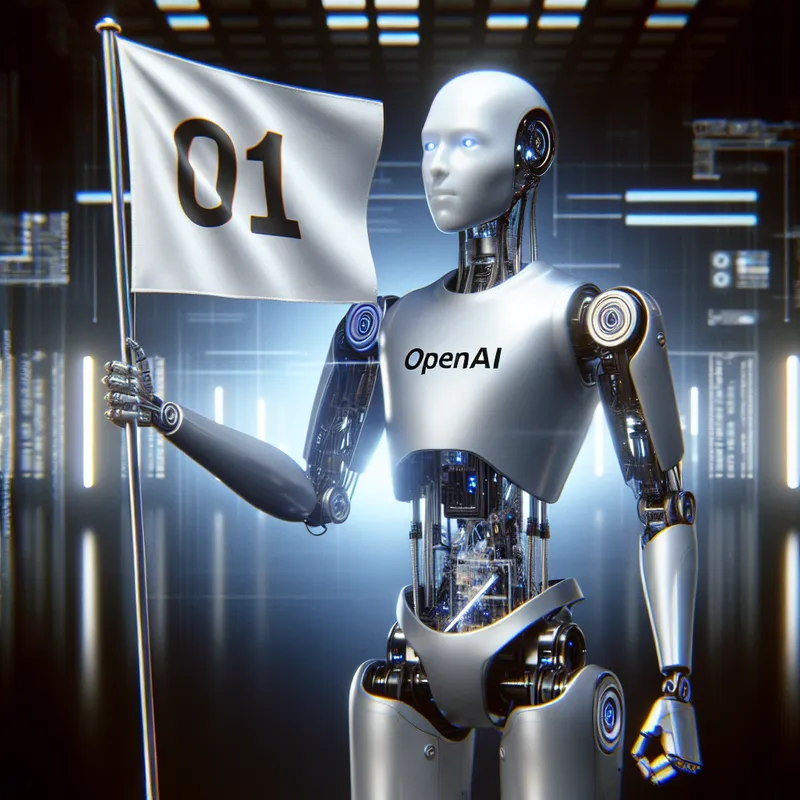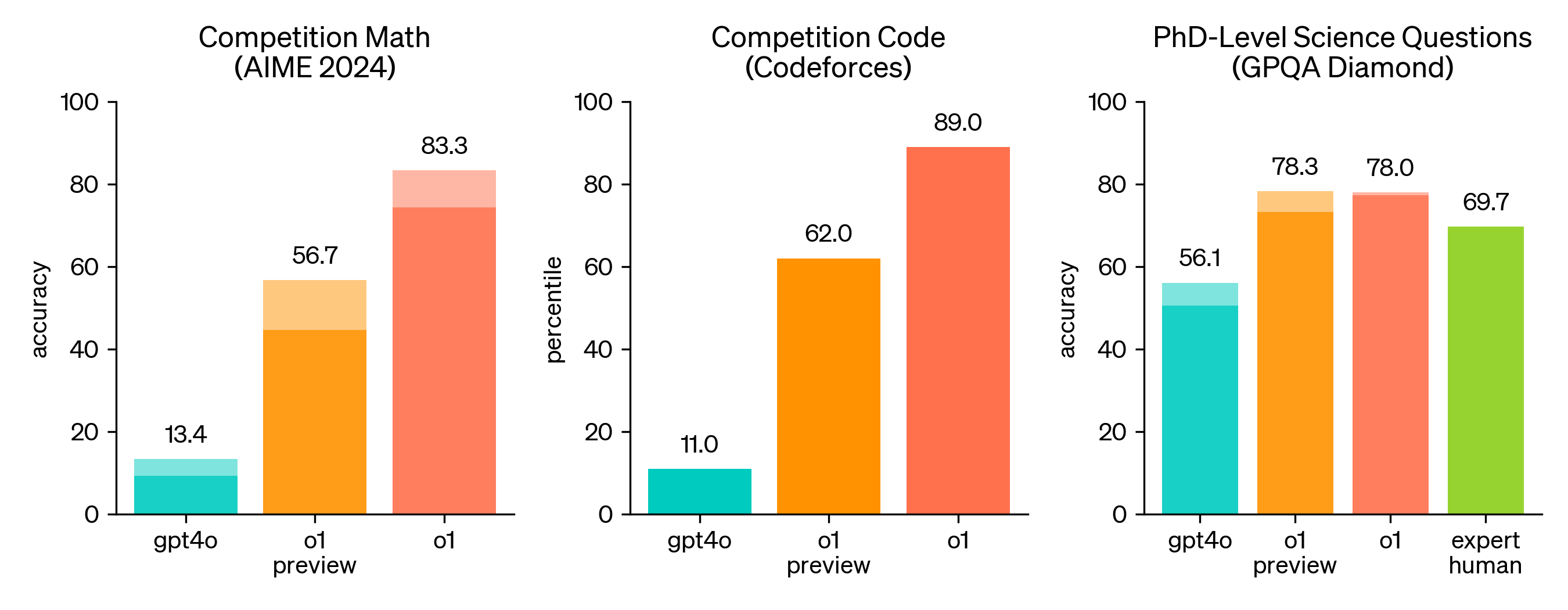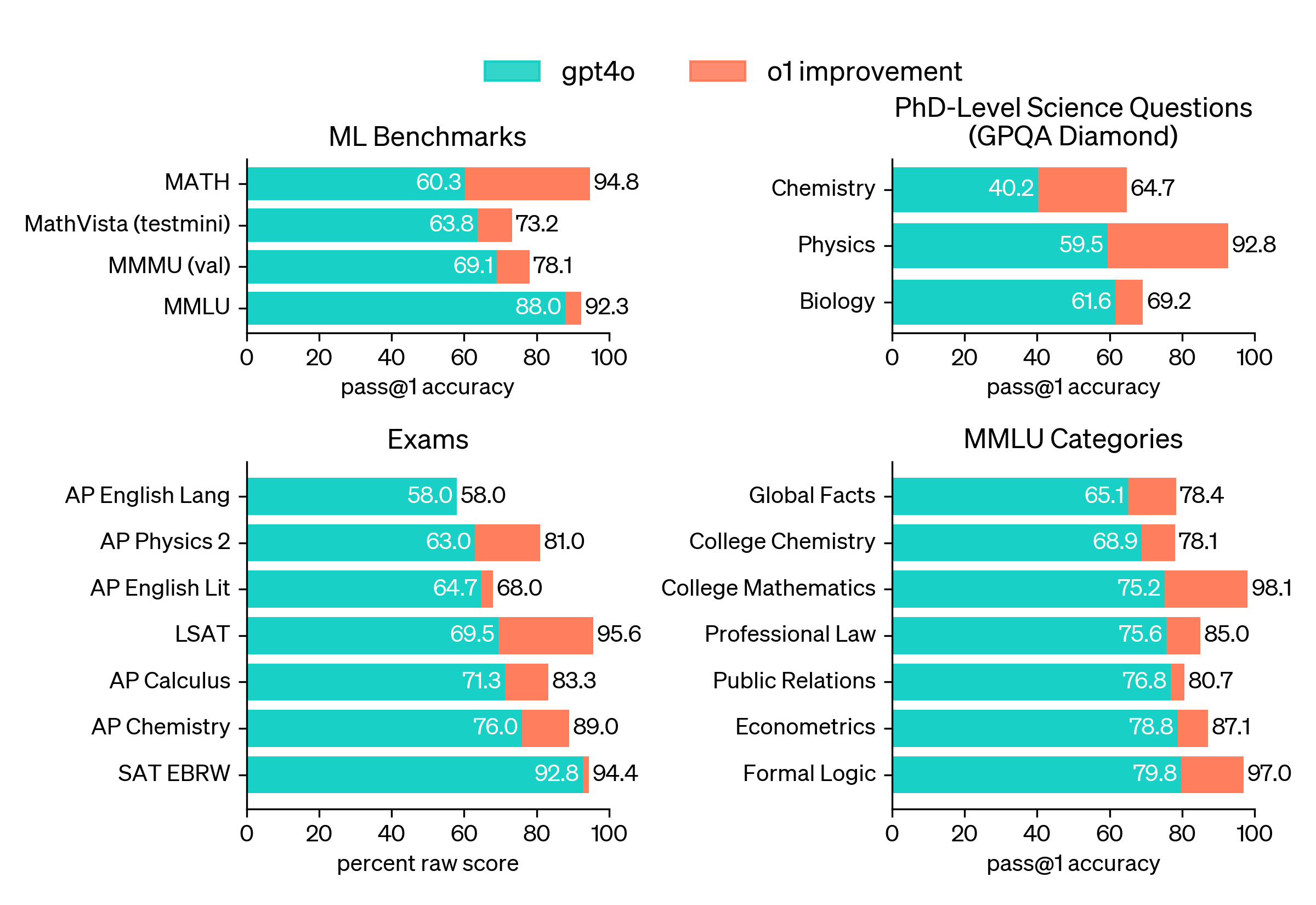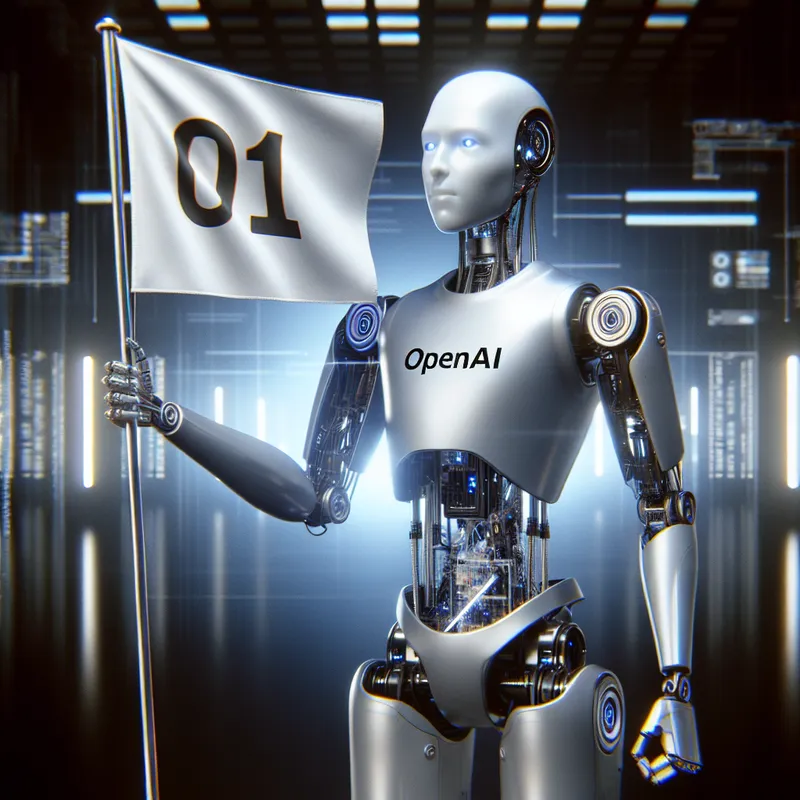
OpenAI has once again made headlines with the launch of its latest artificial intelligence model, known as OpenAI o1. This groundbreaking model, also internally referred to as “Strawberry,” is designed to tackle complex reasoning tasks with enhanced efficiency and accuracy. In this in-depth analysis, we will explore the features, implications, and potential applications of OpenAI o1, as well as its place in the evolving landscape of artificial intelligence.
What is OpenAI o1?
OpenAI o1 is a new series of large language models that utilize advanced reinforcement learning techniques to enhance their reasoning capabilities. Unlike previous models, o1 is trained to think critically before generating responses, allowing it to solve complex problems across various domains, including mathematics, coding, and scientific inquiries. The model has already demonstrated impressive performance, achieving high rankings in competitive programming challenges and excelling in mathematical reasoning tests.
Key Features of OpenAI o1
-
Enhanced Reasoning Abilities: OpenAI o1 is engineered to spend more time processing inquiries before responding. This deliberate approach enables the model to reason through complex questions, providing more accurate and contextually relevant answers.
-
Self-Fact-Checking: One of the standout features of o1 is its ability to fact-check its responses. By employing a chain of thought reasoning process, the model can verify its answers, reducing the likelihood of misinformation and inaccuracies in its outputs.
-
Versatile Applications: Whether it’s handling intricate coding tasks or solving advanced mathematical problems, o1 is designed for a wide range of applications. Its capabilities make it particularly valuable for developers, researchers, and educators who require reliable AI solutions.
-
Integration with ChatGPT: The o1 model is now integrated into ChatGPT, allowing users to leverage its advanced reasoning abilities within conversational contexts. This integration enhances the user experience by providing more thoughtful and accurate interactions.
Technical Specifications and Model Variants
OpenAI has introduced multiple variants of the o1 model, including o1-preview and o1-mini. These models cater to different needs, with the o1-mini being a more compact version designed for quicker responses at a lower computational cost.
The o1 model series is trained on vast datasets and utilizes sophisticated algorithms to refine its reasoning process. By focusing on a PhD-level performance benchmark, OpenAI aims to push the boundaries of what AI can achieve in terms of cognitive tasks.
OpenAI o1 Benchmark Results
OpenAI’s new language model, o1, demonstrates significant improvements in reasoning capabilities over its predecessor GPT-4o. Key performance highlights include:
-
Mathematics: Placed among top 500 students nationally in the USA Math Olympiad qualifier (AIME), solving 93% of problems with advanced sampling techniques.
-
Science: Exceeded human PhD-level accuracy on the GPQA Diamond benchmark for physics, biology, and chemistry problems.
-
Competitive Programming: Ranked in the 89th percentile on Codeforces questions.
-
General Knowledge: Outperformed GPT-4o in 54 out of 57 MMLU subcategories.
-
Multimodal Understanding: Scored 78.2% on MMMU with vision capabilities enabled, competing with human experts.
The model’s performance improves with increased training time and reasoning time. Its success is attributed to its ability to generate and refine long chains of thought before responding, learned through reinforcement learning.
While impressive, these results are specific to certain problem-solving tasks and do not imply overall superiority to human experts in all domains.


OpenAI o1 for ChatGPT uesrs
OpenAI o1 introduces significant improvements for ChatGPT users. This new line of models is designed to excel at complex reasoning tasks, particularly in science, coding, and mathematics.
For ChatGPT users, this introduction brings several exciting developments:
-
Availability: The first model, “o1-preview,” is now accessible to ChatGPT Plus and Team users. A more efficient version, “o1-mini,” is also available.
-
Performance: These models demonstrate remarkable prowess in challenging areas. For instance, in International Mathematics Olympiad qualifying exams, o1 achieved an 83% success rate, a substantial improvement over its predecessor.
-
Usage Limits: Initially, there are weekly rate limits set at 30 messages for o1-preview and 50 for o1-mini.
-
Context window: In ChatGPT, the context windows for o1-preview and o1-mini is 32k. This is different from 128k in the API.
-
Future Access: ChatGPT Enterprise and Edu users will gain access in the coming week, with plans to extend o1-mini to all ChatGPT Free users in the future.
-
Current Limitations: While powerful, o1 models currently lack some familiar features like web browsing and file/image uploading. OpenAI is working to incorporate these in future updates.
-
Ongoing Development: This release is just the beginning. OpenAI promises regular updates and improvements to both the o1 series and the existing GPT models.
OpenAI o1 API
Open AI o1 is also available via API and in the OpenAI playground. Here you can learn about its limitations and pricing.
Usage Limits
-
Only available to Usage Tier 5 API accounts
-
Customers with 30+ days of payment history
-
Previously spent $1000 on the API
-
-
Rate limit: 20 requests per minute for both o1-preview and o1-mini
Pricing
|
Model |
Input (per 1M tokens) |
Output (per 1M tokens) |
|---|---|---|
|
o1-preview |
$15.00 |
$60.00 |
|
o1-mini |
$3.00 |
$12.00 |
|
GPT-4o |
$5.00 |
$15.00 |
|
GPT-4o mini |
$0.15 |
$0.60 |
Key observations:
-
The o1-preview model is significantly more expensive than GPT-4o, costing 3x more for input and 4x more for output.
-
The o1-mini model is priced between GPT-4o and GPT-4o mini, offering a middle-ground option.
-
Both o1 models maintain the same 1:4 ratio between input and output token pricing as the GPT-4o models.
-
The o1 models are considerably more expensive than their GPT-4o counterparts, likely reflecting their advanced reasoning capabilities.
For the most up-to-date and official pricing information, please refer to the OpenAI API pricing page at https://openai.com/api/pricing/.
OpenAI o1 System Card
The OpenAI o1 System Card provides an overview of the safety evaluations and risk assessments for the new o1 model series, which includes o1-preview and o1-mini. These models are designed to perform complex reasoning using chain-of-thought processes. Key points from the System Card include:
-
Safety Evaluations: The models were tested on various safety benchmarks, including disallowed content, jailbreak attempts, and bias evaluations. Both o1-preview and o1-mini showed improvements over previous models in many areas.
-
Preparedness Framework: The models were evaluated using OpenAI’s Preparedness Framework, which assesses risks in cybersecurity, biological threats, persuasion, and model autonomy. Both models were classified as medium risk overall.
-
Capabilities: The o1 models demonstrated strong performance in areas such as coding, math, and scientific reasoning. However, they also showed potential for increased risks in certain areas, such as biological threat information.
-
External Evaluations: OpenAI collaborated with external organizations and experts to assess potential risks and capabilities of the models.
-
Multilingual Performance: The models showed improved performance on multilingual tasks compared to previous versions.
-
Limitations and Ongoing Work: The System Card acknowledges current limitations of the models and areas for future improvement and research.
The document emphasizes OpenAI’s commitment to responsible AI development and deployment, balancing the advancement of AI capabilities with necessary safeguards and risk mitigation strategies.
For the full details, please refer to the original OpenAI o1 System Card: OpenAI o1 System Card
Implications for Developers and Industries
The release of OpenAI o1 has significant implications for various sectors, including education, software development, and research. Here are some key takeaways:
1. Educational Tools
With its advanced reasoning capabilities, OpenAI o1 can serve as a valuable educational tool. Students can use the model to gain insights into complex subjects, receive help with homework, and learn problem-solving strategies. Educators can also utilize the model to create personalized learning experiences tailored to individual student needs.
2. Software Development
For developers, the o1 model can streamline coding processes, assist in debugging, and enhance collaborative project efforts. The model’s ability to understand and generate complex code makes it an indispensable asset in software development environments.
3. Research and Academia
Researchers across disciplines can benefit from o1’s capabilities in handling complex datasets and generating hypotheses. The model can assist in conducting literature reviews, synthesizing information, and exploring new avenues of inquiry, thereby accelerating the pace of academic research.
Comparisons with Previous Models
OpenAI o1 represents a significant evolution from its predecessors, such as GPT-4. While GPT-4 brought substantial improvements in language understanding and generation, o1 goes a step further by emphasizing reasoning and critical thinking. Here are some aspects where o1 outshines previous models:
-
Reasoning Depth: O1’s ability to engage in multi-step reasoning tasks is far superior to that of previous models. This capability allows it to tackle intricate challenges that would have stumped earlier iterations.
-
Error Reduction: The self-fact-checking feature significantly reduces the likelihood of erroneous outputs, which has been a common criticism of earlier AI models.
-
User Experience: The integration of o1 into ChatGPT enhances user interaction by providing more relevant and thoughtful responses, making conversations more engaging and informative.
Future Prospects
The launch of OpenAI o1 marks a pivotal moment in the development of AI technologies. As companies and individuals begin to harness the power of this new model, we can expect to see a range of innovative applications emerge.
OpenAI’s commitment to refining its models and addressing ethical considerations will play a critical role in shaping the future of artificial intelligence. By focusing on responsible AI development, OpenAI can help ensure that advancements in technology benefit society as a whole.
Conclusion
OpenAI o1 represents a significant leap forward in AI reasoning capabilities. With its advanced features, versatile applications, and integration into existing platforms, it is poised to transform how we interact with artificial intelligence. As we continue to explore the potential of this model, it is essential to remain aware of the challenges and ethical considerations that accompany such powerful technologies.
FAQ
What is OpenAI o1?
OpenAI o1 is a new series of AI models designed to enhance reasoning capabilities and provide accurate responses to complex questions. It is capable of self-fact-checking and is integrated into ChatGPT for improved user interactions.
How does OpenAI o1 compare to previous models like GPT-4?
OpenAI o1 offers deeper reasoning capabilities and reduced error rates compared to earlier models like GPT-4. It emphasizes critical thinking and multi-step problem-solving.
What is the knowledge cut-off for the OpenAI o1-preview and o1-mini models?
The OpenAI o1-preview and o1-mini models share the same knowledge cut-off as our GPT-4o models, October 2023.
What usage limits are enforced on the OpenAI o1-preview and o1-mini models
Users on ChatGPT Plus and Team accounts have access to the 30 messages a week with OpenAI o1-preview and 50 messages a week with OpenAI o1-mini. Learn more about OpenAI o1 usage limits.
Can users on ChatGPT Free tier access OpenAI o1 models?
At the moment, OpenAI o1 models are only available on ChatGPT Paid tiers and for Usage Tier 5 API customers. We plan to bring access to OpenAI o1 models on Free tiers at a later time.
Additional resources
For further reading on OpenAI o1 and its implications, you can refer to the following sources:







and how to test o1 preview? there is no any link
Unfortunately, the o1-preview is no longer available, and only the o1-mini is available on a limited basis. There are many other models to try and I recommend the Gemini Pro 002.